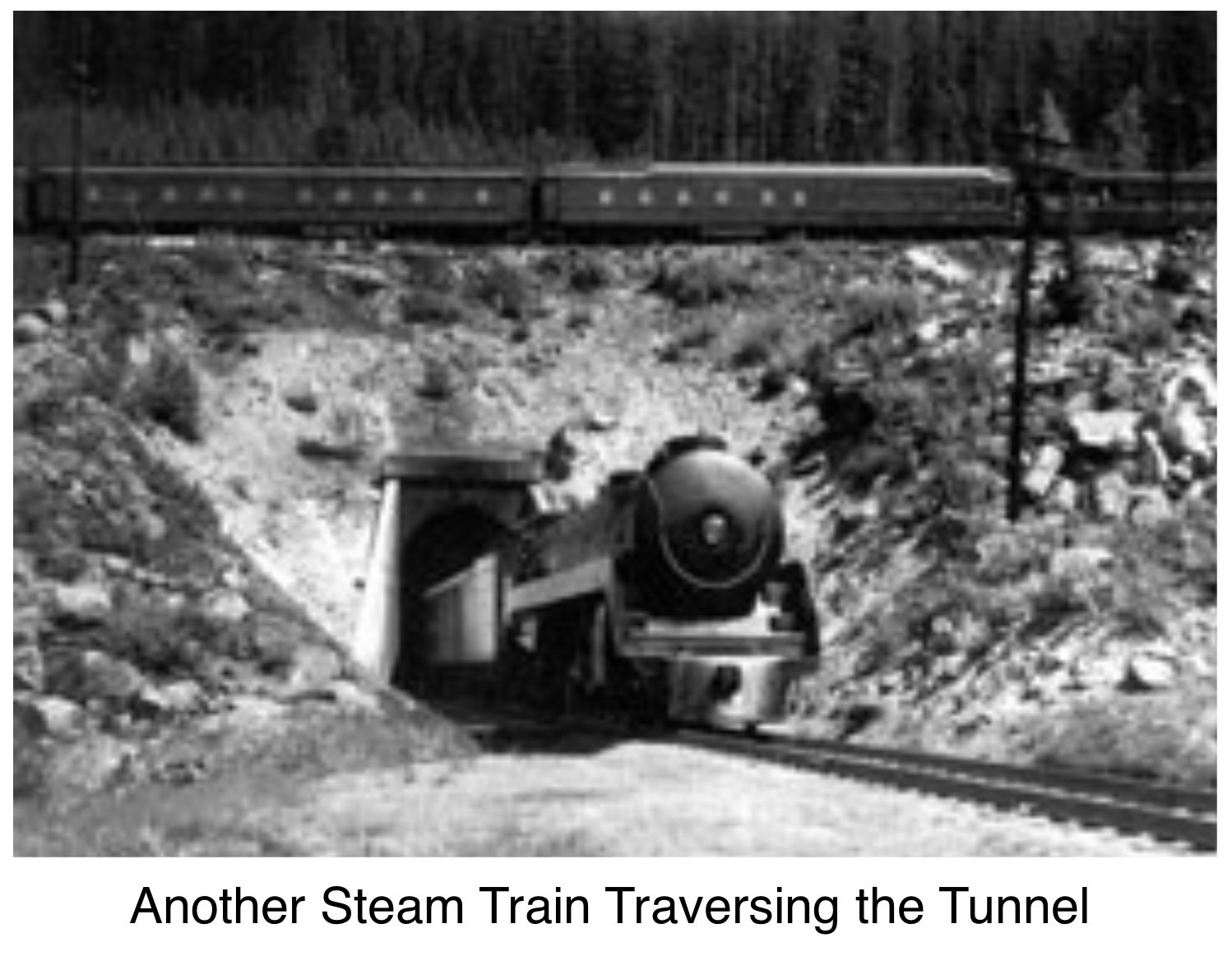Blue View - Figure 8 Railroad Tunnels?
/A Problem
What do you do, as a railroad engineer (the kind of engineer that builds a railroad, not the kind that drives the train) when you come to a mountain pass that is just too steep for a train to pass over? That’s the dilemma that Major A. B. Rogers faced when he was surveying the planned route of the Canadian Pacific Railway (CPR) as it traversed Kicking Horse Pass in the Canadian Rockies. The maximum grade that a train can handle is about 3% (the Canadian government requirement was a bit more conservative with a maximum of 2.5%), while the route chosen by the railroad had a grade of 4.5% - almost double the grade allowed by the government.
A Few Solutions
One solution was to reroute the entire line 120 miles further north, but the Canadian government vetoed that option. Rerouting the railroad that far north would have made it less competitive with the new American railways just a few miles south.
Another solution would be to build a very long tunnel under the pass. It would have to be miles long, and while technically possible, the CPR was under a great deal of pressure to finish the railway sooner rather than later, and building the tunnel would take too long.
A third solution was to excavate enough of the mountain and pass to reduce the grade to an acceptable slope, but this would also require too much time.
In the end, the government agreed to grant them a waiver, allowing the CPR to build a temporary rail route with a 4.5% grade - just until they could figure out a better solution.
The CPR started building the route over Kicking Horse Pass in 1884. Some 1000 men worked on it, making the princely sum of $2.25 per ten hour day - about double the average wage for unskilled workers at the time, and they earned every cent. On average, there was one fatal accident per week from avalanches, falls, wild fires, or falling rocks, and many more were maimed or injured.
More Problems
Once finished, the steep grade was, at best, a bottleneck and at worst, deadly. To ascend the grade from the west, a 15 car train required four extra engines to push it up the grade. Shuttling engines and crews, and inching up the grade caused delays and bottlenecks. Traveling west down the grade, it was very difficult to control the speed - the first train to attempt it derailed and plunged into the river at the bottom, killing three people. To catch runaway trains, the CPR added several sidings, very much like runaway truck ramps on today’s mountainous highways. The switches were always set for the sidings, and if a train was going too fast, it would be diverted onto the siding where the uphill grade would bring it to a stop. A switchman was stationed at each siding, and would throw the switch for the main line if the train was proceeding down the grade at a safe speed.
On the positive side, the train ride became a real tourist attraction, drawing visitors from thousands of miles away. Often, people would ride on the cow catcher to experience the full thrill of the ride down the hill.
The Long Term Solution
The CPR engineers continued to work on a better long-term solution. A similar problem was solved in Georgetown, Colorado by building a long, high, circular trestle that routed the train in a loop over itself, but the “Georgetown Loop” wasn’t feasible at Kicking Horse Pass.
J.E. Schwitzer, one of the railway’s engineers, finally found a solution that was modeled after a system developed in Switzerland. By adding two circular tunnels to the route, the railway grade would be reduced by half.
Work began in 1907, and crews were soon blasting away at both ends of the two tunnels. It took 20 months, another thousand men, and 75 train cars of dynamite to complete the new route. In 1909, after 25 years of use, the old ‘temporary’ route was discontinued. It eventually became part of the Trans-Canada Highway.
How It Works
A train traveling eastward from the small town of Field makes a long assent up the pass, through two small, straight tunnels until it reaches the first spiral tunnel. Inside the first spiral, it continues climbing through the 0.6 mile long circular tunnel and emerges 50 feet above the entrance. The train then progresses up the pass to the second circular tunnel, where it gains another 56 feet, then climbs to the top of Kicking Horse Pass. After traveling through the two spiral tunnels, the train will have done a complete figure eight and gained 106 feet. Pretty cool!
BTW, the origin of the name of the pass, Kicking Horse, is interesting. James Hector was the first man to survey the pass, and while traveling over it, one of the group’s horses slid down a steep slope and into the river. Hector went into the river after it in an attempt to get it to shore before it was swept downriver. In its panic, the horse kicked Hector, knocking him unconscious. The men working with him pulled him from the water and tried to revive him, but were unsuccessful, and when they couldn’t detect a pulse or respiration, decided he must have died. It took them a couple of hours to dig his grave, and just before they finished, Hector woke up. He watched them for a few minutes, then, figuring out what they were doing, advised the men that he wasn’t quite ready for it. They named both the river and the pass Kicking Horse. Or so the story goes. (I don’t know how the horse fared).
See you next week…









